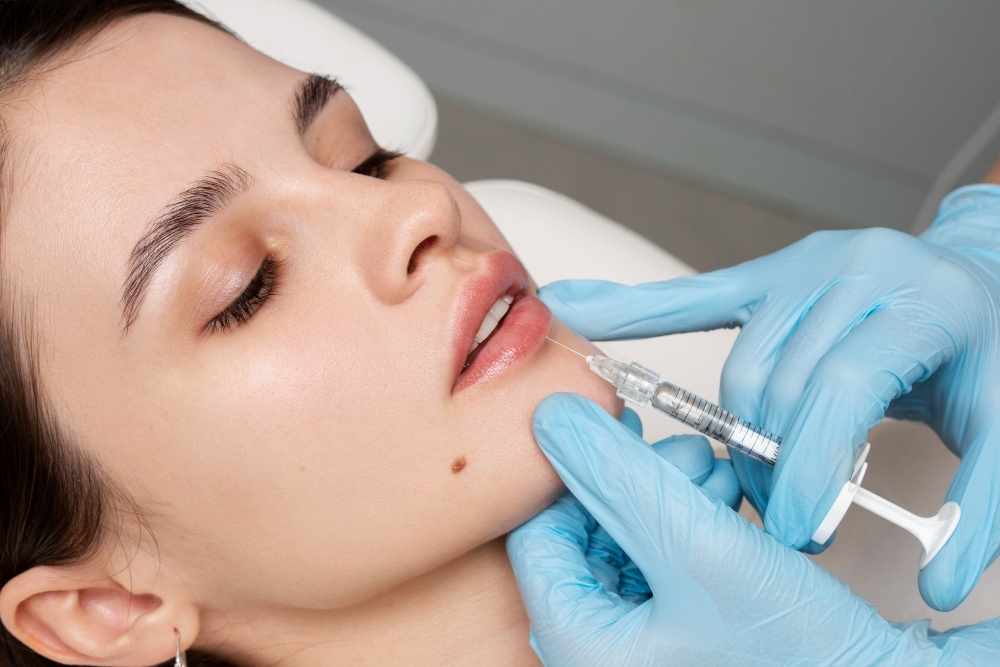Lip Fillers: Best Guidance For Your Lips

Lip fillers have become increasingly popular in recent years as a non-surgical option for enhancing the appearance of lips. This guide explores the various aspects of lip fillers, including their definition, benefits, types, the treatment process, aftercare, and potential risks.
1. What Are Lip Fillers?
Lip fillers are injectable substances used to add volume, shape, and definition to the lips. The most common ingredient in lip fillers is hyaluronic acid, a naturally occurring substance in the body that helps maintain skin hydration and elasticity. By introducing fillers into the lips, individuals can achieve a fuller, more youthful appearance.
2. Benefits of Lip Fillers
Lip fillers offer a range of aesthetic and psychological benefits:
2.1 Enhanced Volume
One of the primary reasons people opt for lip fillers is to increase lip volume. This can create a more youthful and attractive appearance.
2.2 Improved Shape and Definition
Lip fillers can enhance the contours of the lips, providing better definition to the cupid’s bow and vermilion border. This can lead to a more balanced and aesthetically pleasing look.
2.3 Correction of Asymmetry
Many individuals have naturally asymmetrical lips. Fillers can help correct this imbalance, creating a more harmonious appearance.
2.4 Non-Surgical Option
Unlike surgical procedures, lip fillers are minimally invasive and require no downtime. This makes them an appealing option for those seeking enhancement without the commitment of surgery.
2.5 Immediate Results
The effects of lip fillers are often visible immediately after the procedure, allowing individuals to enjoy their new look right away.
3. Types of Lip Fillers
There are various types of lip fillers available, each with its unique properties:
3.1 Hyaluronic Acid Fillers
These are the most commonly used lip fillers. Hyaluronic acid is a hydrophilic substance that attracts water, providing natural-looking volume and hydration. Popular brands include Juvederm and Restylane.
3.2 Collagen Fillers
Collagen fillers were among the first types used for lip enhancement. While they offer immediate results, they are less commonly used today due to the longer-lasting effects of hyaluronic acid fillers and the potential for allergic reactions.
3.3 Calcium Hydroxylapatite Fillers
These fillers provide a firmer structure and can stimulate collagen production. They are less commonly used for lips but can be an option in specific cases.
3.4 Poly-L-Lactic Acid Fillers
These fillers are used to stimulate collagen production over time and are typically used for volume restoration rather than immediate enhancement.
4. The Treatment Process
4.1 Consultation
The process begins with a consultation with a qualified practitioner. During this appointment, the practitioner will assess your lips, discuss your aesthetic goals, and recommend the most suitable type of filler.
4.2 Preparation
Before the treatment, the practitioner may apply a topical anesthetic to minimize discomfort. This step is especially important for sensitive areas like the lips.
4.3 Injection
The filler is injected into specific areas of the lips using a fine needle or cannula. The practitioner will carefully assess symmetry and volume during the procedure, which typically takes 30 minutes or less.
4.4 Post-Treatment Care
After the injections, you may experience some swelling, redness, or tenderness in the treated area. These effects are generally mild and subside within a few days.
5. Aftercare and Results
5.1 Immediate Aftercare
- Avoid Touching: Refrain from touching or massaging the lips for at least 24 hours to prevent complications.
- Cold Compress: Applying a cold compress can help reduce swelling and discomfort.
5.2 Long-Term Care
- Hydration: Keep the lips hydrated with lip balm to maintain softness.
- Sun Protection: Use sunscreen on the lips to prevent sun damage, which can affect the results.
5.3 Expected Results
Results from lip fillers can be seen immediately, with optimal effects developing over the next few days as swelling subsides. The effects typically last between six months to a year, depending on the type of filler used and individual metabolic factors.
6. Potential Risks and Side Effects
While lip fillers are generally safe, there are potential risks and side effects that individuals should be aware of:
6.1 Common Side Effects
- Swelling and Bruising: Mild swelling and bruising are common and usually resolve within a few days.
- Tenderness: Some tenderness in the injected area may occur.
6.2 Rare Complications
- Infection: Though rare, infections can occur at the injection site.
- Allergic Reactions: Some individuals may experience allergic reactions to the filler material.
- Lumps or Irregularities: In some cases, lumps or irregularities may form if the filler is not evenly distributed.
6.3 Professional Guidance
To minimize risks, it is crucial to choose a qualified and experienced practitioner for the procedure. Always discuss your medical history and any concerns during the consultation.
7. Conclusion
Lip fillers are a popular and effective way to enhance the appearance of the lips, offering numerous benefits with minimal downtime. With various types of fillers available and immediate results, they provide a flexible option for individuals seeking to achieve fuller, more defined lips. As with any cosmetic procedure, it is essential to consult with a qualified practitioner to ensure safety and satisfaction with the results. By understanding the process and potential risks involved, individuals can make informed decisions about their lip enhancement journey.

Anti-Wrinkles
It's all about giving you a beauty experience that feels just right—like catching up with an old friend.

Anti-Wrinkles
It's all about giving you a beauty experience that feels just right—like catching up with an old friend.

Anti-Wrinkles
It's all about giving you a beauty experience that feels just right—like catching up with an old friend.

